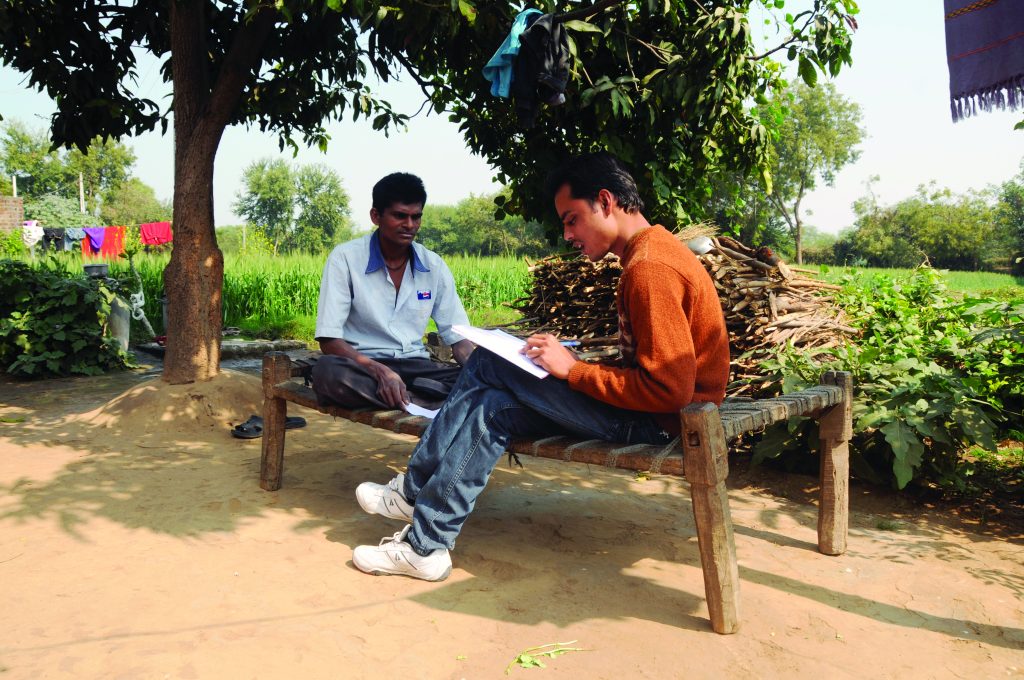Our research and field teams occasionally run into curious and amusing situations on their data-collection missions into the hinterland. These experiences also offer insights into people’s lived experiences and the various dimensions of the problems central to our research. Here is an excerpt of ‘field notes’ from our coffee table book – ‘LEAD – the journey, catalysing change, enabling transformative solutions’.
It only Takes a Village
Imagine you’ve been assigned to track down and interview a person named Napolean Einstein (that’s a real name, by the way) in Chennai. To further complicate the plot, let’s say you have never been to Chennai, and don’t know anything about where the nomenclaturally famous Napolean Einstein lives. How would you go about your quest? Would you go around asking people randomly on the street: “Can you tell me where Napoleon Einstein lives?” You probably wouldn’t. But that’s exactly what our surveyors do on the field. And it works remarkably well. Most people in the village seem to know everyone else in the village. So Manjunath and Lakshmi may not have distinctive names, but they are relatively easier to track down than the doubly distinguished Napolean Einstein!
The Number-cruncher
As head of the Small Enterprise Finance Centre, Davina MacPhail travelled extensively across India to meet with many organisations and find partners for impact evaluation studies. She reports on one such travel experience:
“During one of my travels in 2006 in Assam, I went to meet a local entrepreneur along with the representative of a local organisation. The entrepreneur had undergone training in accounting, but his English was a bit patchy, and we had to work along with translators. We were talking about his wife, who was in the business, and for some reason, we had to record her age. At which point, he pulled out his calculator, and punched in some numbers. ‘We are in 2006,’ he said, and then he keyed in the year of her birth to finally arrive at her age. It struck me that that was a very unusual — but very clinical — way of estimating a wife’s age…”
The Animal Spirit
On my first day on the field to conduct a survey, the Regional Field Manager asked me: “What do you think is the biggest problem we face on the field?” I pondered a while and responded: “Refusal to be surveyed?” “No,” she said, and while I was still contemplating what the challenge might be, she gave the answer. “It’s dogs,” she declared. Dogs? In the previous four months, three surveyors had been bitten by dogs, she said. People in rural areas have a fluid relationship with the animals around them. In some villages, there are dogs that are ‘domesticated’ enough to trot into a household compound whenever they like, bark at visitors, and eat the leftover food. Yet they are not ‘pets’: they live on the streets for much of the day and usually don’t have assigned names that establish pet ownership. This is true for cats, sparrows and goats as well. And it’s not just households that do this; even staff at commercial rural banks, gram panchayat offices and anganwadi centres all exercise this ‘community ownership’ of animals.
Read the full set of stories here.



